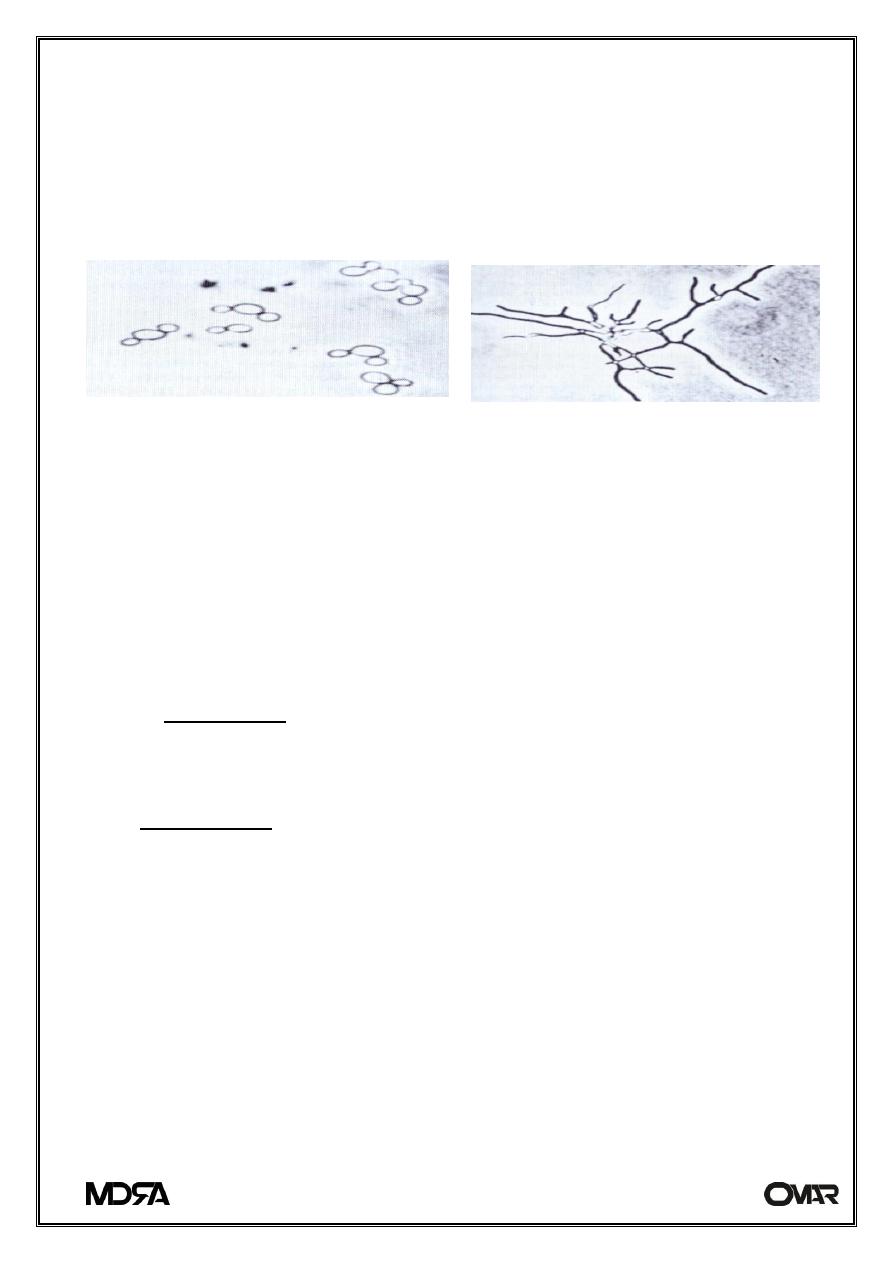
3rd Stage
Candida Albicans
Microbiology
lab
1
Candida albicans
Fungus are :
EUCARIOTIC ORGANISMS TWO BASIC FORMS:
- YEASTS
- MOLDS
MYCOSES
1. SUPERFICIAL
2. CUTANEOUS
3. SUBCUTANEOUS
4. ENDEMIC (PRIMARY, SYSTEMIC):
Histoplasma capsulatum, Coccidioides immitis, Blastomyces dermatitidis,
Paracoccidioides brasiliensis
5. OPPORTUNISTIC
- endogenous
- Candida (different species)
-
Pneumocystis carinii (?)
- exogenous
- Cryptococcus neoformans
- Aspergillus (different species)
- Zygomycetes
- MANY OTHER FUNGI
Candida albicans and other Candida species
Harmless inhabitants of the skin and mucous membranes of all humans
Normal immune system keeps candida on body surfaces skin and
mucous membranes integrity
presence of normal bacterial flora

3rd Stage
Candida Albicans
Microbiology
lab
2
MAIN DEFENSE MECHANISMS AGAINST CANDIDA .
phagocytosis
killing, mostly in polymorphonuclear cells, less in macrophages
T-cells (CD4)
THE MOST IMPORTANT RISK FACTORS
1. Neutropenia
2. Diabetes mellitus
3. AIDS
4. Myeloperoxidase defects
5. Broad-spectrum antibiotics
6. Major surgery
7. Organ transplantation
8. Neonates
9. Severity of any illness
10. Intravenous drug addicts
11. Indwelling catethers
CLINICAL FORMS OF CANDIDIASIS
1. Cutaneous and mucosal candidiasis
2. Invasive (systemic, disseminated, hematogenous) candidiasis
INVASIVE CANDIDIASIS
Usually begins with candidemia (but in only about 50% of cases
candidemia can be proven)
If phagocytic system is normal, invasive infection stops here
If phagocytic system is compromised, infection spreads to many organs
and causes focal infection in these organs
mortality of candidemia is 30-40%
DIAGNOSIS
Gram stain ( Gr +ve )
isolation and/or pathology positive of organ involved
Culture in selective media Sabauraud agar
other tests is Germ tube is +ve only in Candida albicans.
